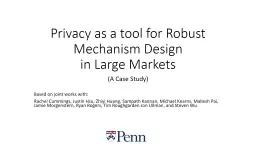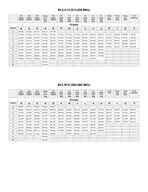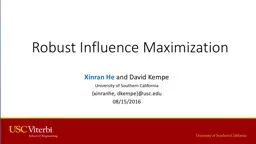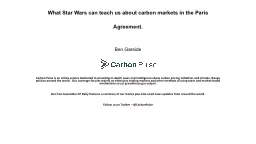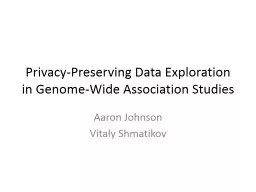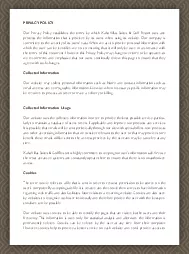PPT-Privacy as a tool for Robust Mechanism Design in Large Markets
Author : lindy-dunigan | Published Date : 2018-11-04
A Case Study Based on joint works with Rachel Cummings Justin Hsu Zhiyi Huang Sampath Kannan Michael Kearns Mallesh Pai Jamie Morgenstern Ryan Rogers Tim
Presentation Embed Code
Download Presentation
Download Presentation The PPT/PDF document "Privacy as a tool for Robust Mechanism ..." is the property of its rightful owner. Permission is granted to download and print the materials on this website for personal, non-commercial use only, and to display it on your personal computer provided you do not modify the materials and that you retain all copyright notices contained in the materials. By downloading content from our website, you accept the terms of this agreement.
Privacy as a tool for Robust Mechanism Design in Large Markets: Transcript
Download Rules Of Document
"Privacy as a tool for Robust Mechanism Design in Large Markets"The content belongs to its owner. You may download and print it for personal use, without modification, and keep all copyright notices. By downloading, you agree to these terms.
Related Documents

